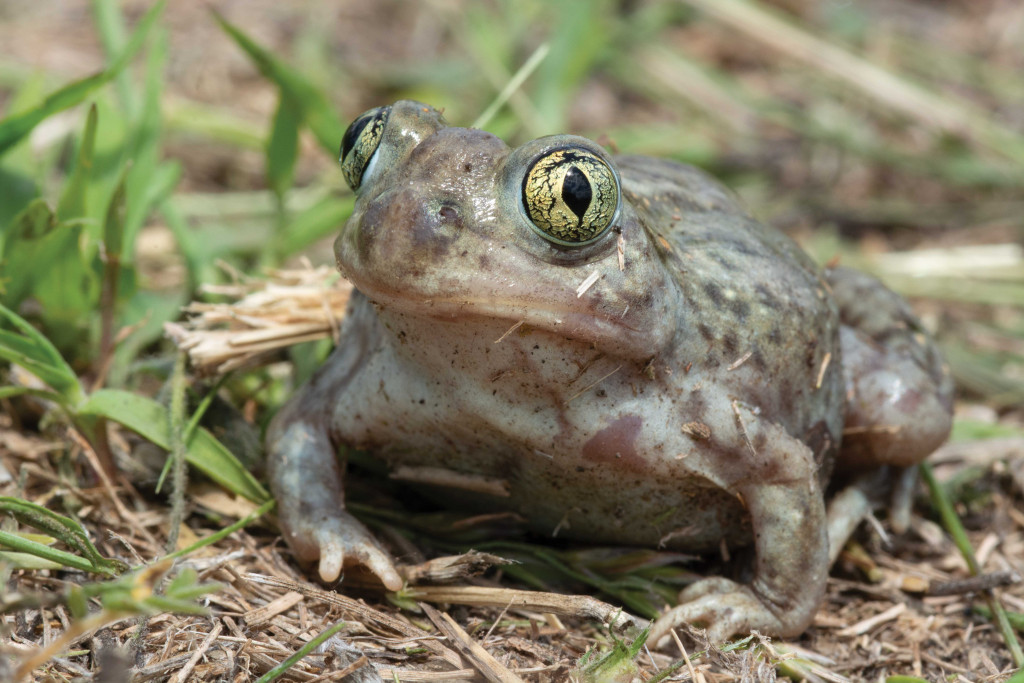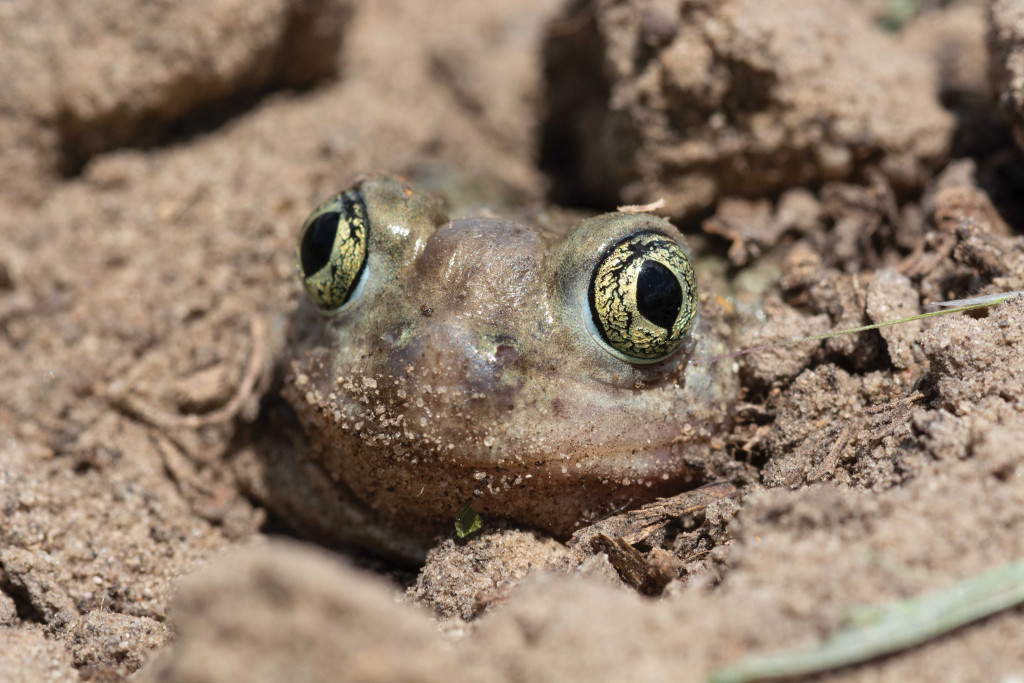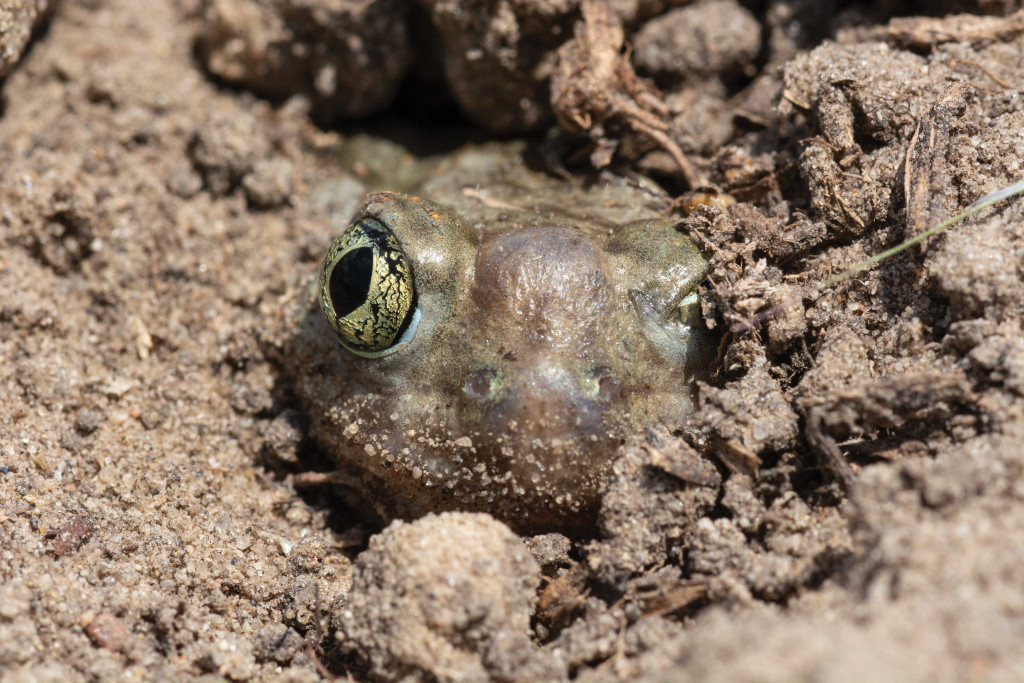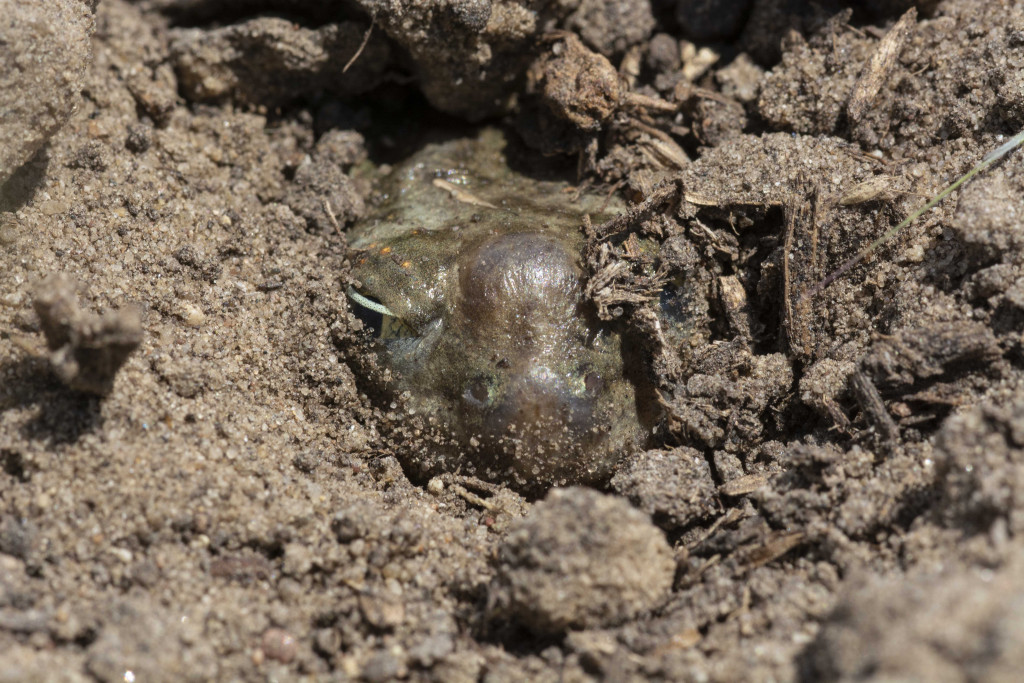Enlarge

Story and photos by Chris Helzer
I was on the way out to The Nature Conservancy’s Platte River Prairies when the preserve manager, Cody Miller, called.
“Hey, have you ever seen a spadefoot toad?”
“Just once,” I said, “but never along the Platte. You got one?”
“Yep,” he said. “I saw it hopping away from the mower, and so I moved it to safety. It wasn’t the kind of toad I expected! I’m holding it until you get here.”
Fifteen minutes later, I arrived to find Miller holding the little spadefoot gently in his hand. The spadefoot, of course, wasn’t interested in sitting for a portrait. While a grinning Cody watched from above, I scooted around on my belly in the mowed grass, trying to get the spadefoot to stop hopping long enough for my camera to focus. I wasn’t having much luck.
Finally, I grabbed the toad and stuck it on top of a mowed-off pocket gopher mound, sure it would once again hop away. Instead, it sat perfectly still, and I quickly snapped a few photos before I noticed that its back feet were shuffling discreetly in the loose soil. That’s when my brain clicked into gear, and I realized what was happening.
The plains spadefoot is colloquially called a toad, but several characteristics, including its smooth, moist skin, make it more of a frog. They’re rarely seen because they spend most of their lives underground, emerging only during or after rainstorms to mate and lay eggs in puddles. The adults then dig themselves back into the earth and their tadpoles try to grow up before their puddle evaporates.




As Cody and I watched, the spadefoot in front of us slowly started to sink into the gopher mound. It sat fully upright and slowly rotated as its hind feet worked the soil from beneath its body. Within three minutes, the toad had been completely swallowed up by the earth, leaving almost no sign it had been there. It was mesmerizing and magical to watch.
I took lots of photos of the spadefoot as it gradually disappeared. In the moment, I wrestled with whether to switch to video but decided to stick to still photos. Afterward, I briefly considered digging the spadefoot back out to see if it would repeat the performance on video, but I quickly dismissed the thought, and we left the little guy alone in his subterranean hideout. ■
Chris Helzer is The Nature Conservancy’s director of science in Nebraska.
The Plains Spadefoot
The plains spadefoot toad is the only spadefoot toad in the state. Look at the rear foot of the toad and you will find a keratinized spade on it which no other toad or frog in the state has. It allows them to dig into sandy soils.
The plains spadefoot ranges from southwestern Canada, throughout the Great Plains of the western United States and into northern Mexico.

The post Disappearing Act appeared first on Nebraskaland Magazine.
















